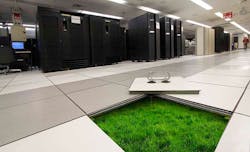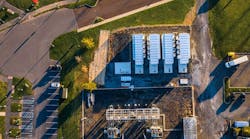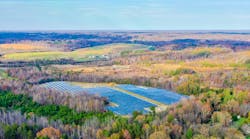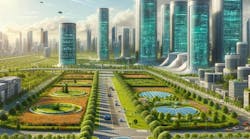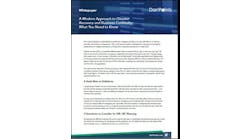In this week’s Data Center Frontier Voices of the Industry, Aaron Binkley, Digital Realty’s Director of Sustainability, highlights several innovations in renewable energy that are showing up in green data centers.
Energy costs a lot. According to Professor Ian Bitterlin, as quoted in Computer Weekly, it’s the single largest line item in the data center’s total cost of ownership, comprising 20% to 60%. “Electricity is often the second or third highest variable operating cost for large data center owners,” Michael Kanellos writes in a February 2015 Forbes article. The search for sources of power that cost less, offer stable pricing and are more sustainable is driving innovation and investment in new data center technologies. Some, like solar, are coming of age. Other approaches are brand new.
Aaron Binkley, Director of Sustainability, Digital Realty
Green Boom Time
For some time, installation costs discouraged companies from realizing the long term benefits of solar- and wind-powered data centers. Lately though, data center providers and data centric mega-businesses like Google, Amazon, Apple and Facebook are eagerly pursuing the benefits of sustainable power sources that are not as susceptible to manipulation by local utilities and other market forces. Potential bottom line operational savings combine with rebates, tax credits and goodwill to make a strong business case for investment in sustainable data centers.
An Underwater Data Center
Microsoft just launched Project Natick, a sealed data center made of recycled materials and dropped offshore to take advantage of “free” cooling from ocean waters. The idea is to sink these modules near high traffic coastal markets to deliver low latency to local, shore-based data center clients. The “hands off” interior servers are built to last for five years and the modules themselves for up to twenty years.
Heat & Compute
The cloud goes green with distributed heating, a new win/win product model now gaining traction in Europe. The provider company places servers on remote premises, either in offices or private homes. These (OpenStack-based) servers deliver inexpensive, pay-as-you-go cloud computing for remote customers via wall mounted radiators, the people who host the servers get free heat. Numerous companies are developing the distributed server/heater products and one major French data center company just made a 2.5 million pound Euro bet investment in one of the leading distributed server/heater providers, betting that centralized and decentralized compute models are complementary, not mutually exclusive.
Don’t Just Cool Your Data Center, Refrigerate
California-based startup Core4 is achieving impressive energy saving results with technology based on refrigeration rather than conventional data center air conditioning. This, combined with a holistic approach to air cooling, has demonstrated the ability to cut cooling costs up to 72%, with a 28% saving of water costs. First customer Sonic.net experienced an improvement in server to cooling ratio from 1:68:1 to 7:1 and reduced PUE from 1.82 to 1.25. And Emerson Network Power’s pumped refrigerant system proves more planet friendly than air or water cooling solutions.
Design-It-Yourself-Infrastructure
Now serving nearly 400 million users, LinkedIn was dissatisfied with its off- the-shelf data center networking switch, so it tasked its infrastructure team to follow in Facebook’s and Google’s footsteps and develop a custom solution. The resulting 3.2Tbps networking switch is built on ODM hardware and runs LinkedIn’s own version of the Linux OS. It will be deployed in LinkedIn’s own custom-designed data center deployment in Oregon and support their long-term goal of a zero carbon footprint.
By Aaron Binkley, Director of Sustainability, Digital Realty. Digital Realty and its vendor Emerson Network Power worked together to innovate a data center cooling solution suited to fourteen of California’s sixteen distinct climate zones. This project won California Energy Commission approval for a technology solution that uses less power and saves millions of gallons of water a year. To learn more about data center sustainability click here.
